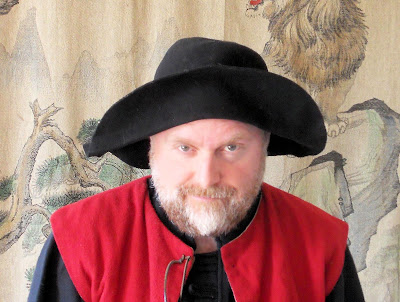The Beret is a hat I could associate with the French, but that is only a small part of its many roles, this is a hat with many strong associations which I've pointed out below
I started with the French but if you go back to its origins it can be equally be Spanish or Scottish were they are called Scottish Bonnets, notable the Tam-o-shanter.
The hat I'm wearing is one I associate with the French with little pip of fabric in the centre.
The Beret is a round flat, soft hat were the fabric overhangs the headband on all sides equally.
Berets can be handwoven, made of lightweight wool felt, crocheted, knitted or modern fibres.
The Beret as far as I can tell started with Basque shepherds in the 17th Century and was then mass produced by the French and Spanish in 19th Century.
They are used as military hats, the Blue Berets of Scotland in the 17th Century, The blue berets of French forces in 18th Century, American Special forces called Green Berets, the red berets of the British Parachute regiment and many other military groups.
They are also the hat of revolutionaries, most notably the image of Cha Guevara, The black berets of the black power movement in the United States, The black Berets of the IRA, and one I knew nothing about the brown berets of the Chicano Movement which wants parts of the United States returned to Mexico, and many more.



















































